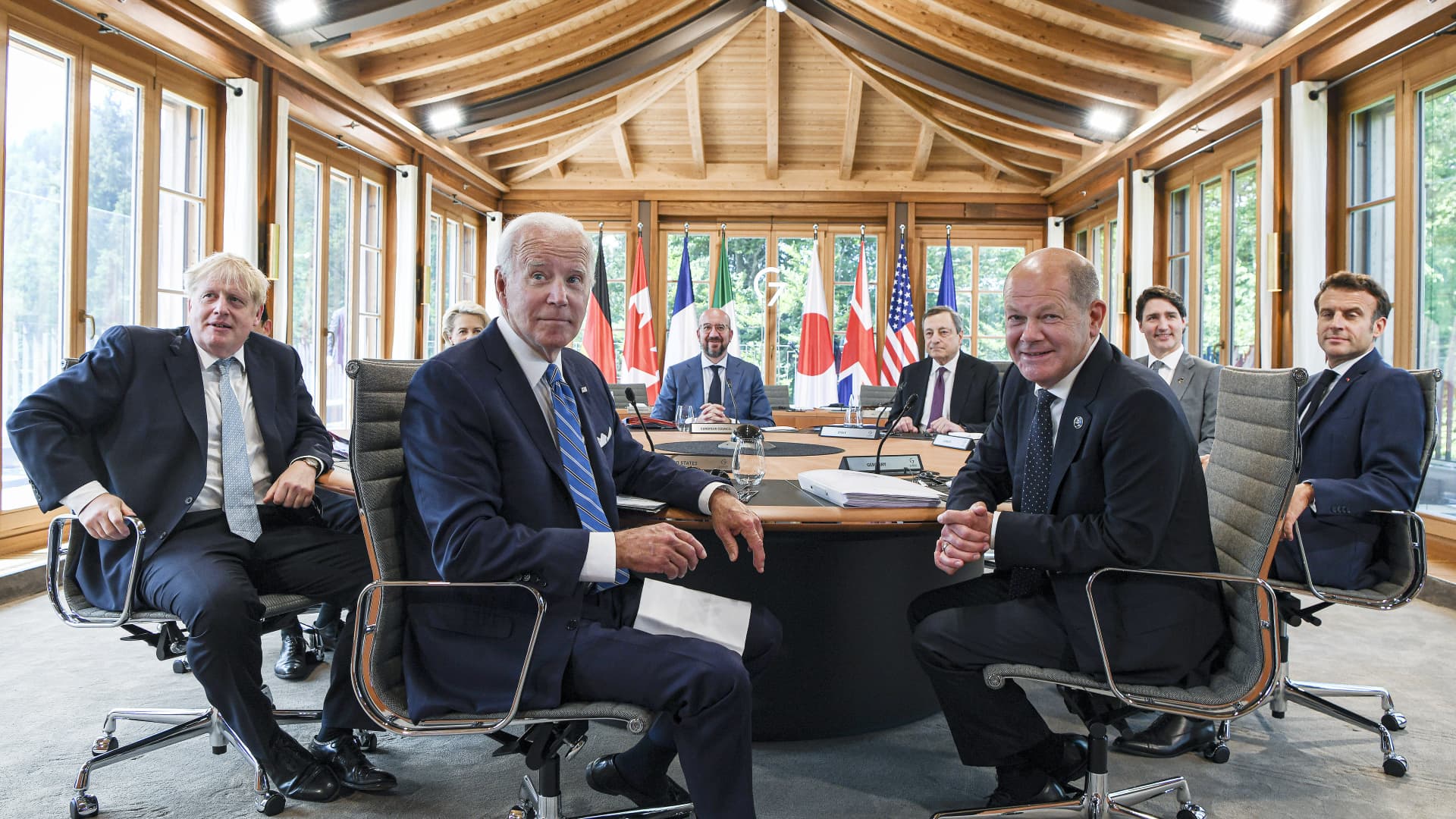
The Group of 7 has announced a new infrastructure funding program that could rival China’s Belt and Road Initiative. One expert says the G-7’s plan offers hope to developing countries but it remains to be seen whether it can match the BRI.
On Sunday, the U.S. and the other members of the G-7 including Canada, Germany and Japan formally launched the Partnership for Global Infrastructure and Investment which aims to raise about $600 billion for global infrastructure projects in low- and middle-income countries in the next five years.
“It does promise something the BRI perhaps did not have at the beginning,” said Choi Shing Kwok, CEO of Singapore-based research institute ISEAS-Yusof Ishak Institute. “It promises hard and soft infrastructure, it promises a more holistic approach.”
The BRI is China’s ambitious program to build physical and digital infrastructure connecting dozens of countries spanning from Asia to Europe and the Middle East. It is the centerpiece of Chinese President Xi Jinping‘s foreign policy.
“It is questionable whether at this stage the scale [of the G-7 initiative] can match that of the BRI but that is something to be seen later,” Choi told CNBC’s “Street Signs Asia” on Monday.
Choi acknowledged that it might not be entirely fair to compare the two projects especially since the BRI has had a 10-year headway and there were scant details in the G-7’s partnership proposal.
In the past decade or so, China has signed more than 170 BRI cooperation agreements with 125 countries and 29 international organizations across Asia and Europe, as well as Africa, Latin America and the South Pacific, Chinese official data showed.
Nearly $800 billion in investments have been undertaken within the BRI, surpassing the investments currently pledged by the G-7. Trillions more dollars were expected to be invested through China’s infrastructure project into the network comprising six development corridors.
The G-7’s infrastructure project “is better than the initial approach for the BRI, which was done in a rather decentralized, I’d say piecemeal, approach,” Choi said.
The BRI “didn’t have the rigor in ensuring all the projects are economically sound and environmentally friendly,” he said, adding that the G-7’s plan appears to be more climate friendly and designed to ensure receiving countries benefit from the investments.
“But having said that, China has revamped its approach to the BRI in recent years and more of the money is now flowing to projects that are more sound.”
It has taken Western economies more than 10 years to come up with a program that could compete with the BRI, Choi said, adding it was initially dismissed as “a Chinese project.”
Still, the U.S. and the other members appear to be taking it seriously now, as seen with the latest infrastructure partnership, he said.
“Its scale is significant. It’s not quite the scale of the BRI but they are trying to match it so that it is not far off [from the BRI],” Choi said.
In the end, if the implementation is done in such a way that it does not force countries to factor in geopolitics, to go with the partnership or BRI, then it will be acceptable.Choi Shing KwokCEO ISEAS – Yusof Ishak Institute
When asked if the partnership is nothing more than “geopolitical battle lines being drawn” by the U.S. against China, Choi says the way the G-7 plan is delivered will signal its intentions.
“There are certain motivations for launching the partnership. It does offer alternatives to the BRI in a very deliberate way,” Choi said.
“In the end, if the implementation is done in such a way that it does not force countries to factor in geopolitics — to go with partnership or BRI — then it will be acceptable.”
Who could benefit?
With major economies now stepping up their infrastructure support for developing countries, places like India, Brazil and Indonesia are likely to herald more economic growth, Riedel Research Group founder David Riedel told CNBC’s “Squawk Box” on Monday.
He said it did not matter who was the one investing, as long as more efforts were being expended but pointed out that outcomes would not be apparent overnight.
“It doesn’t mean much near term but longer term, investors need to appreciate the importance the investments made into infrastructure no matter who’s making it,” Riedel said.
According to the OECD, Asia alone needs around $26 trillion to pay for infrastructure building, including green projects until 2030.
If more money were offered to developing countries, places like Brazil, India and Indonesia would stand to gain, Reidel added.
Brazil has a large population and big economy and could do with more infrastructure to boost growth while Indonesia, being an energy exporter, would grow if more money was being invested in its energy project, he said.




